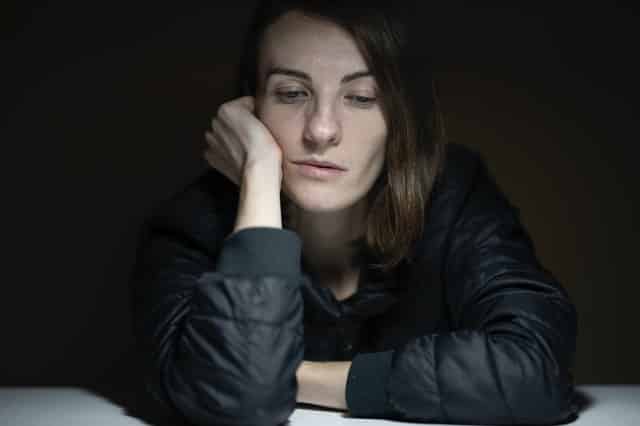What is post-traumatic stress disorder (PTSD)?
Post-traumatic stress disorder (PTSD) is a mental health disorder that some people develop after they experience or see a traumatic event. The traumatic event may be life-threatening, such as combat, a natural disaster, a car accident, or sexual assault. But sometimes the event is not necessarily a dangerous one. For example, the sudden, unexpected death of a loved one can also cause PTSD.
It’s normal to feel afraid during and after a traumatic situation. The fear triggers a “fight-or-flight” response. This is your body’s way of helping to protect itself from possible harm. It causes changes in your body, such as releasing certain hormones and increases in alertness, blood pressure, heart rate, and breathing.
In time, most people recover from this naturally. But people with PTSD don’t feel better. They feel stressed and frightened long after the trauma is over. In some cases, the PTSD symptoms may start later on. They might also come and go over time.
What causes post-traumatic stress disorder (PTSD)?
Researchers don’t know why some people get PTSD and others don’t. Genetics, neurobiology, risk factors, and personal factors may affect whether you get PTSD after a traumatic event.
Who is at risk for post-traumatic stress disorder (PTSD)?
You can develop PTSD at any age. Many risk factors play a part in whether you will develop PTSD. They include
· Your sex; women are more likely to develop PTSD
· Having had trauma in childhood
· Feeling horror, helplessness, or extreme fear
· Going through a traumatic event that lasts a long time
· Having little or no social support after the event
· Dealing with extra stress after the event, such as loss of a loved one, pain and injury, or loss of a job or home
· Having a history of mental illness or substance use
Signs and Symptoms
While most but not all traumatized people experience short term symptoms, the majority do not develop ongoing (chronic) PTSD. Not everyone with PTSD has been through a dangerous event. Some experiences, like the sudden, unexpected death of a loved one, can also cause PTSD. Symptoms usually begin early, within 3 months of the traumatic incident, but sometimes they begin years afterward. Symptoms must last more than a month and be severe enough to interfere with relationships or work to be considered PTSD. The course of the illness varies. Some people recover within 6 months, while others have symptoms that last much longer. In some people, the condition becomes chronic.
A doctor who has experience helping people with mental illnesses, such as a psychiatrist or psychologist, can diagnose PTSD.
To be diagnosed with PTSD, an adult must have all of the following for at least 1 month:
· At least one re-experiencing symptom
· At least one avoidance symptom
· At least two arousal and reactivity symptoms
· At least two cognition and mood symptoms
Re-experiencing symptoms include:
· Flashbacks—reliving the trauma over and over, including physical symptoms like a racing heart or sweating
· Bad dreams
· Frightening thoughts
Re-experiencing symptoms may cause problems in a person’s everyday routine. The symptoms can start from the person’s thoughts and feelings. Words, objects, or situations that are reminders of the event can also trigger re-experiencing symptoms.
Avoidance symptoms include:
· Staying away from places, events, or objects that are reminders of the traumatic experience
· Avoiding thoughts or feelings related to the traumatic event
Things that remind a person of the traumatic event can trigger avoidance symptoms. These symptoms may cause a person to change his or her routine. For example, after a bad car accident, a person who usually drives may avoid driving or riding in a car.
Arousal and reactivity symptoms include:
· Being easily startled
· Feeling tense or “on edge”
· Having difficulty sleeping
· Having angry outbursts
Arousal symptoms are usually constant, instead of being triggered by things that remind one of the traumatic events. These symptoms can make the person feel stressed and angry. They may make it hard to do daily tasks, such as sleeping, eating, or concentrating.
Cognition and mood symptoms include:
· Trouble remembering key features of the traumatic event
· Negative thoughts about oneself or the world
· Distorted feelings like guilt or blame
· Loss of interest in enjoyable activities
Cognition and mood symptoms can begin or worsen after the traumatic event but are not due to injury or substance use. These symptoms can make the person feel alienated or detached from friends or family members.
Why do some people develop PTSD and other people do not?
It is important to remember that not everyone who lives through a dangerous event develops PTSD. Most people will not develop the disorder.
Many factors play a part in whether a person will develop PTSD. Some examples are listed below. Risk factors make a person more likely to develop PTSD. Other factors, called resilience factors, can help reduce the risk of the disorder.
Some factors that increase the risk for PTSD include:
· Living through dangerous events and traumas
· Getting hurt
· Seeing another person hurt, or seeing a dead body
· Childhood trauma
· Feeling horror, helplessness, or extreme fear
· Having little or no social support after the event
· Dealing with extra stress after the event, such as loss of a loved one, pain and injury, or loss of a job or home
· Having a history of mental illness or substance abuse
Some factors that may promote recovery after trauma include:
· Seeking out support from other people, such as friends and family
· Finding a support group after a traumatic event
· Learning to feel good about one’s actions in the face of danger
· Having a positive coping strategy, or a way of getting through the bad event and learning from it
· Being able to act and respond effectively despite feeling fear
Researchers are studying the importance of these and other risk and resilience factors, including genetics and neurobiology. With more research, someday it may be possible to predict who is likely to develop PTSD and to prevent it.
Treatments and Therapies
The main treatments for people with PTSD are medications, psychotherapy (“talk” therapy), or both. Everyone is different, and PTSD affects people differently, so a treatment that works for one person may not work for another. Anyone with PTSD needs to be treated by a mental health provider who is experienced with PTSD. Some people with PTSD may need to try different treatments to find what works for their symptoms.
If someone with PTSD is going through an ongoing trauma, such as being in an abusive relationship, both of the problems need to be addressed. Other ongoing problems can include panic disorder, depression, substance abuse, and feeling suicidal.
Medications
The most studied type of medication for treating PTSD is antidepressants, which may help control PTSD symptoms such as sadness, worry, anger, and feeling numb inside. Other medications may help treat specific PTSD symptoms, such as sleep problems and nightmares.
Doctors and patients can work together to find the best medication or medication combination, as well as the right dose. Check the U.S. Food and Drug Administration website for the latest information on patient medication guides, warnings, or newly approved medications.
Psychotherapy
Psychotherapy (sometimes called “talk therapy”) involves talking with a mental health professional to treat a mental illness. Psychotherapy can occur one-on-one or in a group. Talk therapy treatment for PTSD usually lasts 6 to 12 weeks, but it can last longer. Research shows that support from family and friends can be an important part of recovery.
Many types of psychotherapy can help people with PTSD. Some types target the symptoms of PTSD directly. Other therapies focus on social, family, or job-related problems. The doctor or therapist may combine different therapies depending on each person’s needs.
Effective psychotherapies tend to emphasize a few key components, including education about symptoms, teaching skills to help identify the triggers of symptoms, and skills to manage the symptoms. One helpful form of therapy is called cognitive behavioral therapy, or CBT. CBT can include:
· Exposure therapy. This helps people face and control their fear. It gradually exposes them to the trauma they experienced safely. It uses imagining, writing, or visiting the place where the event happened. The therapist uses these tools to help people with PTSD cope with their feelings.
· Cognitive restructuring. This helps people make sense of the bad memories. Sometimes people remember the event differently than how it happened. They may feel guilt or shame about something that is not their fault. The therapist helps people with PTSD look at what happened realistically.
Other types of treatment can help as well. People with PTSD should talk about all treatment options with a therapist. Treatment should equip individuals with the skills to manage their symptoms and help them participate in activities that they enjoyed before developing PTSD.
How Talk Therapies Help People Overcome PTSD
Talk therapies teach people helpful ways to react to the frightening events that trigger their PTSD symptoms. Based on this general goal, different types of therapy may:
· Teach about trauma and its effects
· Use relaxation and anger control skills
· Provide tips for better sleep, diet, and exercise habits
· Help people identify and deal with guilt, shame, and other feelings about the event
· Focus on changing how people react to their PTSD symptoms. For example, therapy helps people face reminders of the trauma.
How Talk Therapies Help People Overcome PTSD
Talk therapies teach people helpful ways to react to the frightening events that trigger their PTSD symptoms. Based on this general goal, different types of therapy may:
· Teach about trauma and its effects
· Use relaxation and anger control skills
· Provide tips for better sleep, diet, and exercise habits
· Help people identify and deal with guilt, shame, and other feelings about the event
· Focus on changing how people react to their PTSD symptoms. For example, therapy helps people face reminders of the trauma.
To help yourself while in treatment:
· Talk with your doctor about treatment options
· Engage in mild physical activity or exercise to help reduce stress
· Set realistic goals for yourself
· Break up large tasks into small ones, set some priorities, and do what you can as you can
· Try to spend time with other people and confide in a trusted friend or relative. Tell others about things that may trigger symptoms.
· Expect your symptoms to improve gradually, not immediately
· Identify and seek out comforting situations, places, and people
Caring for yourself and others is especially important when large numbers of people are exposed to traumatic events (such as natural disasters, accidents, and violent acts).
Kazmo Brain Center is a counseling center located in Frisco, Texas specializing in post-traumatic stress disorder and will work with you toward a happier and more satisfying life. If you face problems and think that you need aid in fixing them, Kazmo Brain Center can do excellent help.
Resources:medlineplus.gov
nimh.nih.gov





